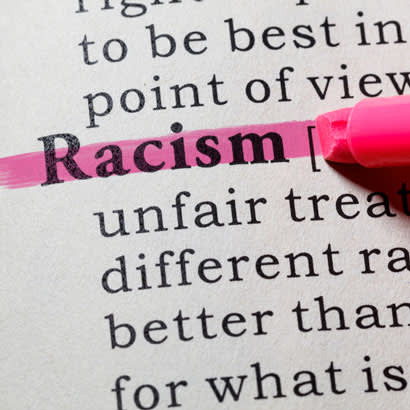
Racism, systemic racism and white supremacy are three terms that are ever-present in our country’s discourse, and they’re often used interchangeably. But do they really mean the same thing? We’ve created this Quick Read to break down each of these definitions to help you determine which word is best to use in different contexts.
Historically, cultural discussions on racism have relied on the definition, “the belief that one race is superior to other races.” Under this definition, someone must intentionally mistreat or deny someone an opportunity based on this belief. However, racism does not have to be an intentional or conscious act; rather, it is most often an unintentional and unconscious demonstration of white dominance toward people of color that can be made at the individual or the societal level. Certainly, racism can be used to describe individual acts, but it’s a common misconception that racism is just about the overt acts of prejudice on an individual level. While it may seem easier to recognize purposeful, individual acts of racism — an uttered slur, a person ignored in the workplace, or an explicit act of violence based on skin color — racism can also be carried out through collective actions that shape our cultural beliefs and values, and in turn, covertly support racist practices. Some may also use the term racism as shorthand to describe systemic racism, such as saying racism is to blame for redlining.
In the U.S., systemic racism describes how longstanding institutions and laws support attitudes of superiority or inferiority between racialized groups. It includes denying the continued existence of racial inequality while contributing to discrimination through favoritism for the dominant racial group. Systemic racism creates an environment where outcomes will automatically favor white people because of the disadvantages laid upon people of color. It is not a single rule or law. It is racism that is woven into the fabric of our society and unfairly elevates white people over everyone else, whether it is obvious or not.
While most people associate white supremacy with extremist groups like the Ku Klux Klan and the neo-Nazis, white supremacy does not need individual bigotry to function. On the contrary, it is a universal operating system that relies on patterns and practices to consistently disadvantage people of color. It permeates our institutional and cultural assumptions, and it assigns value, morality, goodness and humanity to the white group while casting people and communities of color as worthless (worth less), immoral, bad, inhuman or “undeserving.” While this description sounds like systemic racism, many scholars and Americans prefer the term white supremacy to systemic racism because they feel it more accurately describes the pervasiveness and hierarchy that systemic racism produces in U.S. culture.
While each of these definitions is different, they are all connected by the ways in which they prop up whiteness as dominant and racial “otherness” as submissive. With the constant evolution of language, personal preferences and contexts, the “right” word may never exist. If we can focus on finding the more appropriate word to use when discussing racialized violence or discrimination, we can better combat these unjust systems and prepare our parks to be inclusive environments for all.
Shalini Mirpuri (she/her) is NRPA’s senior manager of education – diversity, equity and inclusion.


